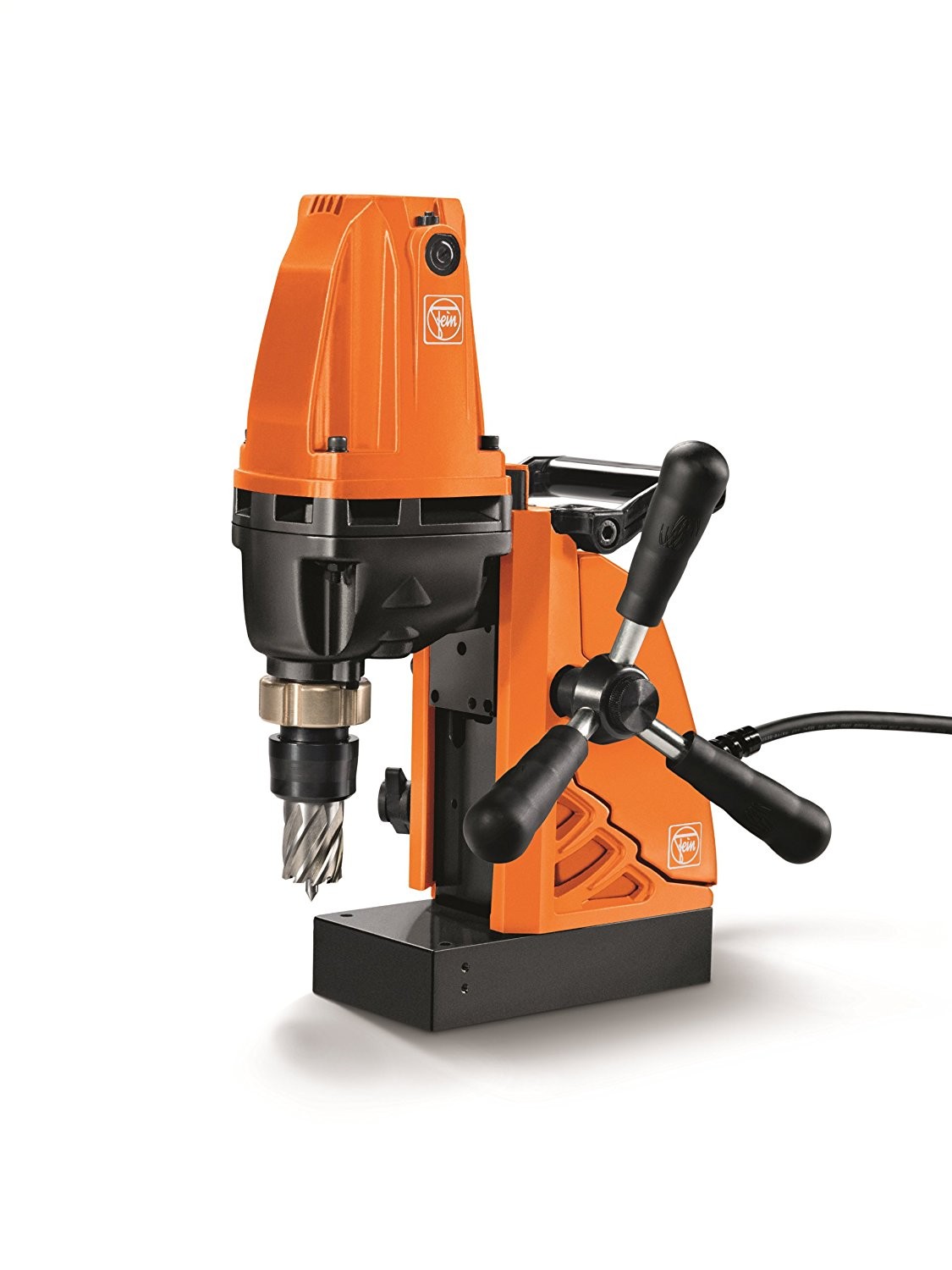Drilling machines, are fixed style drills that can either be mounted on a stand or bolted to the floor or workbench. The speed can be changed on these machines by manually moving a belt across a pulley arrangement.
Drilling machines can offer its users many advantages. Firstly, the lever gives the operator a considerable mechanical advantage. As it is fixed to a table, this allows a vice or clamp to be used to position and secure the work piece making the operation much more precise. In addition to this, the angle of the spindle is fixed relative to the table, allowing holes to be drilled accurately and repetitively.
Most modern machines are technically automated with the use of computer numerical control (CNC) technology. Because of this they can be programmed to produce precise results, continuously. In particular, CNC drilling machines are useful for pattern hole drilling, small hole drilling and angled holes. Drilling machines are frequently used for random workshop tasks such as sanding, honing or polishing, and a variety of other rotating accessories in the chuck.
Milling machines differ to drilling machines in a variety of ways. These machines are used for reshaping metal and other solid materials. Milling machines come in two varieties, either horizontal or vertical. This refers to the position of the cutting tool spindle. Unlike drilling where the piece is stationary and the drill moves vertically onto the material, milling also involves movement of the work piece against the rotating cutter.
In a similar way to drilling machines, milling machines may be manually operated, mechanically automated, or digitally automated CNC. Milling machines can be used to carry out a number of tasks. Some of these are quite complex, for example, drilling, die sinking, rebating, routing, etc.
As with drilling machines, many modern milling machines are controlled by a computer. This provides them with more flexibility. When this is combined with the appropriate accessories; conical tools or a ball nose cutter, it can dramatically improve its precision with no impact on speed, providing a cost-efficient alternative to most flat-surface hand-engraving work.
Previously, these types of machines were very expensive to buy and operate but with the drop in the price of computer technology it has made them much more affordable and accessible. This has allowed more businesses to take advantage of this technology, improving competition in the industry.
This piece was written by Holly Forster who works across a number of industrial and commercial titles. For information on drilling machines [http://www.drillingmachinesource.co.uk/], milling machines [http://www.millingmachinesource.co.uk/] use the links provided.
Drilling machines can offer its users many advantages. Firstly, the lever gives the operator a considerable mechanical advantage. As it is fixed to a table, this allows a vice or clamp to be used to position and secure the work piece making the operation much more precise. In addition to this, the angle of the spindle is fixed relative to the table, allowing holes to be drilled accurately and repetitively.
Most modern machines are technically automated with the use of computer numerical control (CNC) technology. Because of this they can be programmed to produce precise results, continuously. In particular, CNC drilling machines are useful for pattern hole drilling, small hole drilling and angled holes. Drilling machines are frequently used for random workshop tasks such as sanding, honing or polishing, and a variety of other rotating accessories in the chuck.
Milling machines differ to drilling machines in a variety of ways. These machines are used for reshaping metal and other solid materials. Milling machines come in two varieties, either horizontal or vertical. This refers to the position of the cutting tool spindle. Unlike drilling where the piece is stationary and the drill moves vertically onto the material, milling also involves movement of the work piece against the rotating cutter.
In a similar way to drilling machines, milling machines may be manually operated, mechanically automated, or digitally automated CNC. Milling machines can be used to carry out a number of tasks. Some of these are quite complex, for example, drilling, die sinking, rebating, routing, etc.
As with drilling machines, many modern milling machines are controlled by a computer. This provides them with more flexibility. When this is combined with the appropriate accessories; conical tools or a ball nose cutter, it can dramatically improve its precision with no impact on speed, providing a cost-efficient alternative to most flat-surface hand-engraving work.
Previously, these types of machines were very expensive to buy and operate but with the drop in the price of computer technology it has made them much more affordable and accessible. This has allowed more businesses to take advantage of this technology, improving competition in the industry.
This piece was written by Holly Forster who works across a number of industrial and commercial titles. For information on drilling machines [http://www.drillingmachinesource.co.uk/], milling machines [http://www.millingmachinesource.co.uk/] use the links provided.


No comments:
Post a Comment